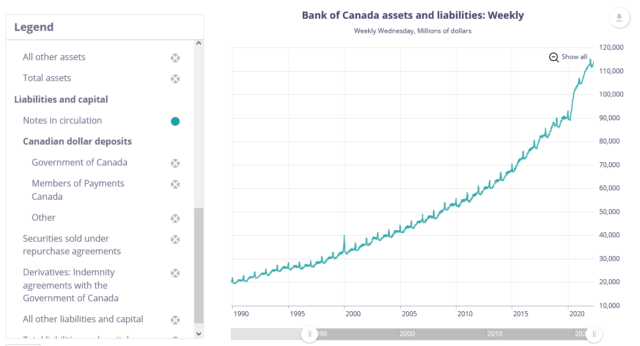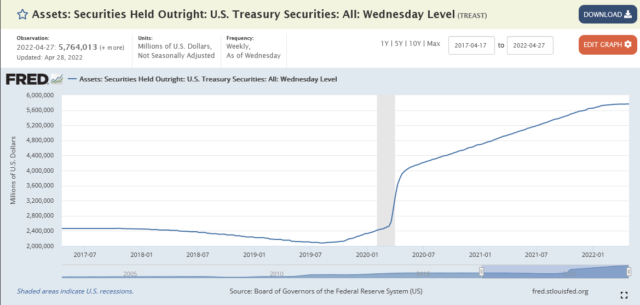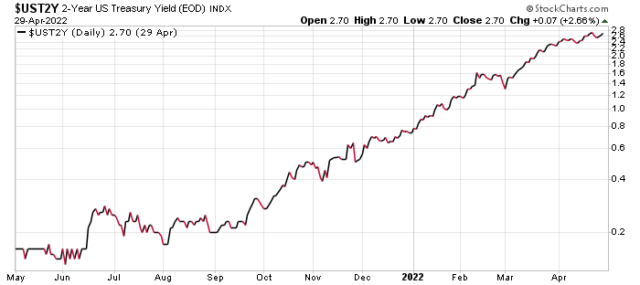“How much should I pay for the equity” is an easy question to ask, but computing all of the variables to come up with a range of prices is not so easy.
One of the components is the rate of interest. As interest rates rise, you want your cash flows today instead of tomorrow.
For instance, if your high tech company will give out a billion dollars in cash 10 years from today, the rate of interest has a significant effect on today’s capitalized value.
At 1% your billion dollars of cash 10 years out translates into $905 million.
However, at 3%, that same billion dollars turns into $744 million, or about an 18% difference from the above.
This is one reason why long term government debt has been decimated as of late. For instance, the TLT ETF (with an average term to maturity of 26 years) from the local peak at the beginning of December to present has rendered investors a 21% loss. The higher the long-term yield goes, the more damage that gets priced into the capital value. This is only mildly tempered by the 2.47% coupon and 3.01% yield to maturity – in other words, all things being equal, you would have to wait 7 years to recover the loss.
The converse is true for entities that will give out cash today instead of tomorrow.
Arch Resources reported their first quarter results today. There is a lot of details to digest, but the obvious headline is the declaration of a $8.11/share dividend, which is the result of their capital allocation policy to give out half of their free cash flow in dividends, while retaining the other half for other general purposes.
With the price of coal, both metallurgical and thermal, being sky-high as a result of a huge confluence of events (chronic under-investment, ESG, Russia/Ukraine, Australia/China, and overall demand for steel production), Arch and other coal producers that are still able to produce (this is the key – they need to have functional mines and not promises to build them) are making a fortune in free cash flow.
This quarter alone, operating cash flow minus capex was $271 million. This number was smaller than it otherwise would have been due to logistical constraints on the railway that serves the company.
In Q2, this number will be increasing because they will be able to further restore rail capacity, coupled with the average realized price to likely be higher.
My rough estimate for Q2’s dividend will be about $11.60/share, but this depends on certain variables being achieved. Barring a complete and total collapse of the commodity market, it will be around that figure.
However, to be “conservative”, let’s use the previous number – $8.11/share. Multiple this by four times and you get $32.44/share annualized. At Monday’s closing price of $131.32, that represents a yield of 24.7%.
Realize that the dividend represents half of the free cash flow available to the company before a reclamation (asset retirement obligation) reserve.
Obviously the stock market is going to find a 24.7% annualized yield to be very difficult to resist, no matter how vilified the sector of the company is. Pension funds, with both broad exposure in an equity market that is down about 12% year to date and a long bond market that is down 16%, have gotten murdered this year. They need an avenue for returns. The temptation is going to be too much for them to avoid.
Not surprisingly the stock market has decided it was too much to resist and Arch is up about 20% as I write this post. The yield at the implied $32.44/year dividend is now down to 20%.
The question is how much temptation there will continue to be going forward. Will yields compress to 18%? 15%? 10%? This really depends on how desperate the market is for a return, coupled with their impression on how durable the coal market is.
At the current pricing of coal, however, Arch will pay back its entire enterprise value to investors (either through dividends or share buybacks) in a couple years. Needless to say, this beats Microsoft equity which has a total return of 4%, based off of analyst estimates on their upcoming fiscal year ended June 2023.
Going back to my original topic of interest rates and cash flows – in a rising rate environment, present cash flows talk bigger than the promise of cash in the future. Arch (and other fossil fuel companies) is going to be a demonstration why.
A happy problem is to decide how to re-invest the cash flows. Internally for Arch, after building up a sufficient cash reserve, they will likely engage in some sort of equity buyback which will further juice up the stock price. So they are already making part of the decision for you with their cash flow, although there is a diminishing returns aspect to this decision (inevitably they will buy back too many shares at too high a price, like they did in 2019). It doesn’t mean that you have to re-invest your dividend into them – indeed, it would probably be a better time than to be stockpiling the cash for stormier days.



